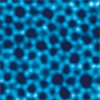| Aug 05, 2025 |
Researchers created a 1-atom-thick carbon membrane that sharpens proton beams, improving cancer therapy and enabling cleaner, scalable tech across multiple fields.
(Nanowerk News) Researchers from the National University of Singapore (NUS) have developed a groundbreaking carbon membrane that could revolutionise proton therapy for cancer patients, and advance technologies in medicine and other areas such as energy devices and flexible electronics.
|
|
The new carbon material which is just a single atom thick shows incredible promise in enabling high-precision proton beams. Such beams are key to safer and more accurate proton therapy for cancer treatment. The new material, called the ultra-clean monolayer amorphous carbon (UC-MAC), could outperform best in class materials like graphene or commercial carbon films.
|
|
The research was led by Associate Professor Lu Jiong and his team from the NUS Department of Chemistry, in collaboration with international partners.
|
 |
| A schematic illustration for disorder-to-disorder synthesis (left) and an atomic-resolution scanning transmission electron microscopy image of UC-MAC (right). (Image: NUS)
|
Beyond graphene: A new class of 2D carbon
|
|
Unlike graphene, which features a perfectly ordered honeycomb structure of hexagonal rings, UC-MAC is made up of a complex mix of five-, six-, and seven-membered carbon rings arranged in a disordered, ultra-thin sheet.
|
|
This atomic-level disorder is an advantage as it gives rise to angstrom-scale pores, which are just one ten-billionth of a metre wide, that can be finely tuned to control the behaviour of tiny particles like protons and molecular hydrogen ions (H2+) as they pass through. The material’s porous and ultra-thin nature makes it ideal for filtering and splitting subatomic particles, a critical need in several high-tech applications.
|
Faster, cleaner, and scalable manufacturing
|
|
One of the biggest hurdles in using this material for real-world applications is the challenge of manufacturing it. Existing methods are slow, costly, and often introduce metal impurities that compromise the material’s performance.
|
|
To solve this, the researchers developed a new industry-compatible synthesis process called the disorder-to-disorder (DTD) approach. Using a special type of plasma-enhanced chemical vapor deposition (ICP-CVD), they were able to grow an 8-inch UC-MAC sheet in seconds, much faster than previous methods, without any detectable metal contamination.
|
|
This is a major step forward in scaling up the production of this advanced material for industrial and medical use.
|
|
This achievement was made possible through close collaboration between synthetic chemists, materials scientists, and theoretical physicists, including Professor Zeng Xiao Cheng from City University of Hong Kong, Assistant Professor Zhao Xiaoxu from Peking University, Associate Professor Thomas Osipowicz from NUS Department of Physics, and other contributing authors.
|
|
The research breakthrough was published in the scientific journal Nature Nanotechnology (“Ultraclean monolayer amorphous carbon yields a high-precision proton beam”).
|
Sharper proton beams for safer and more effective treatment
|
|
When used as a membrane to split molecular hydrogen ions into individual protons, UC-MAC produced proton beams that were significantly sharper than those generated using graphene or traditional carbon films. In fact, the new material reduced unwanted proton scattering events by about twice as much as graphene and 40 times more than commercial carbon thin films.
|
|
This is especially important for non-invasive cancer treatments such as proton therapy, where focused beams are used to target and destroy tumours while sparing healthy tissue. Thinner membranes with minimal scattering could help clinicians better control the beam current and direction, making treatment safer and more effective.
|
A versatile platform for future technologies
|
|
While the immediate spotlight is on proton therapy, UC-MAC has potential far beyond medicine. Its ultra-clean, porous structure could be useful for many applications including energy devices such as fuel cells and batteries, catalysis where precise molecular separation is key, and flexible electronics.
|
|
“The semiconducting properties of UC-MAC films also make them promising candidates for ultra-thin electronics, particularly for sub-2 nm integrated circuits—a critical frontier in the post-Moore’s law era,” said Assoc Prof Lu.
|
A step toward real-world use
|
|
By demonstrating a fast, scalable, and clean method to produce UC-MAC, the research team has paved the way for transitioning this powerful new material from the lab to real-world applications.
|
|
This advancement is not just a step forward in materials science, but a leap towards practical, life-saving technologies that are thinner, faster, and more precise than ever.
|


